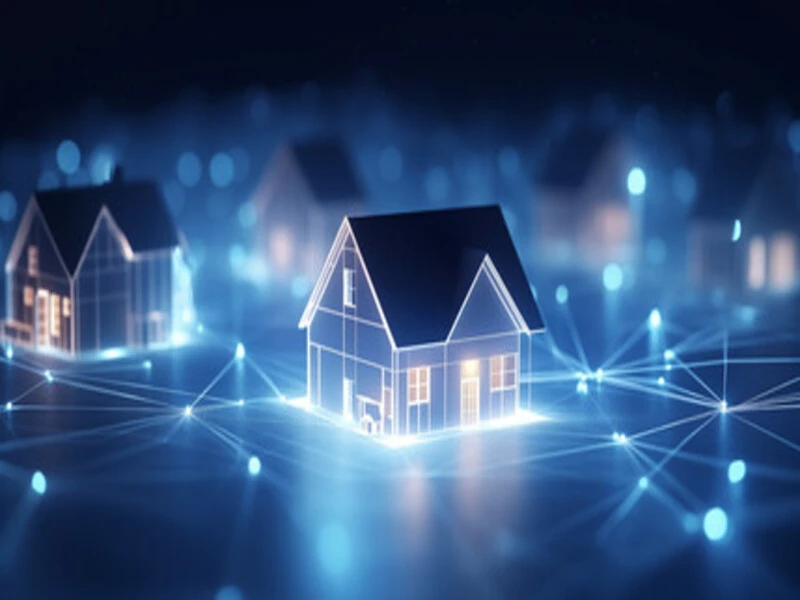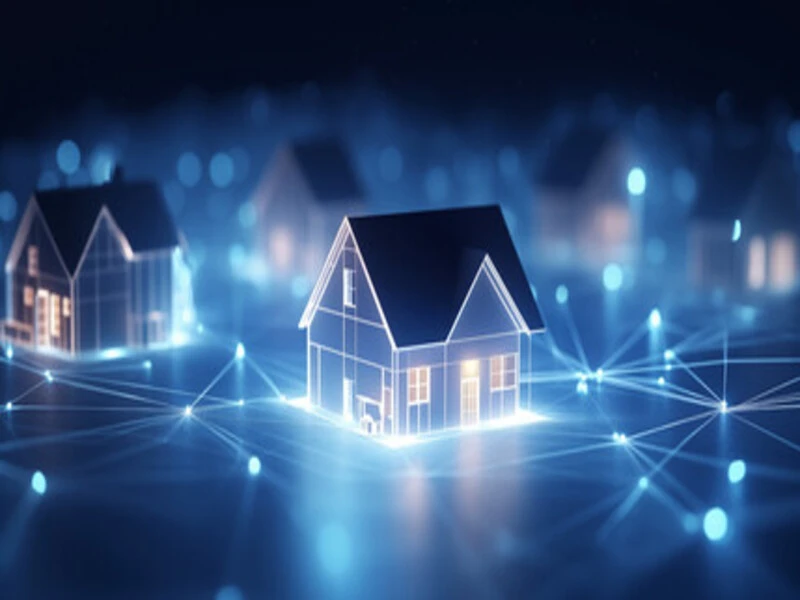Since its launch in 2018, Verizon 5G Home Internet has made significant strides in expanding its availability and improving its service. This innovative internet solution leverages the power of 5G technology to deliver high-speed internet to homes wirelessly. Unlike traditional wired connections such as fiber, cable, or DSL, Verizon 5G Home Internet utilizes a fixed wireless approach, which has proven to be a game-changer in the broadband industry. This review explores the growth, performance, and customer experience of Verizon 5G Home Internet Review, shedding light on its advantages and potential limitations.
Table of Contents
ToggleThe Rise of Verizon 5G Home Internet
Verizon’s journey into the 5G arena began in earnest with the launch of its 5G Home Internet service in 2018. The service started in a limited number of cities, but its expansion has been rapid and impressive. A significant milestone was achieved in January 2022 when Verizon unveiled its 5G Ultra Wideband network. This advancement significantly boosted the availability of Verizon 5G Home Internet, making it accessible in approximately 900 cities across the United States.

The introduction of the 5G Ultra Wideband network marked a new era for Verizon. Unlike previous generations of wireless internet, which often suffered from slower speeds and higher latency, 5G technology promised near-gigabit download speeds and low latency. This leap in performance has positioned Verizon 5G Home Internet as a viable alternative to traditional wired broadband services.
Comparison with Verizon Fios
Verizon’s broadband offerings also include Verizon Fios, a 100% fiber-optic internet service that has consistently scored high in customer satisfaction studies. However, Verizon Fios is primarily available in the Northeast, limiting its reach. The advent of 5G Home Internet has allowed Verizon to significantly expand its broadband footprint beyond the geographical constraints of fiber infrastructure. This expansion has been reflected in the growing customer base, with Verizon’s most recent 2024 quarterly report indicating that approximately 3.5 million customers now subscribe to Verizon 5G Home Internet.
The Fixed Wireless Approach
One of the key distinctions of Verizon 5G Home Internet is its fixed wireless approach. Traditional internet connections rely on wired infrastructure, such as coaxial cables for cable internet or fiber-optic lines for fiber internet. In contrast, fixed wireless internet connects homes to the internet wirelessly using a receiver that picks up signals from nearby cellular towers.

This method of delivery offers several advantages. First, it bypasses the need for extensive and often costly physical infrastructure. Deploying fiber-optic cables requires significant investment and time, particularly in areas with challenging terrains or low population densities. Fixed wireless internet, on the other hand, can be deployed more rapidly and at a lower cost, making it an attractive option for expanding broadband access.
Performance and Speed
Historically, fixed wireless connections like satellite internet and 4G LTE internet have been slower and less reliable than wired connections. However, 5G technology has significantly changed this narrative. Verizon 5G Home Internet offers download speeds that can rival or even surpass those of traditional broadband services.
In many regions, Verizon’s 5G plans are capable of delivering near-gigabit download speeds. This performance is achieved through the use of a millimeter-wave spectrum, which provides high bandwidth and low latency. While coverage with millimeter-wave can be limited to certain urban areas, Verizon has also been expanding its coverage using mid-band and low-band spectrum, which offer wider coverage albeit at slightly lower speeds.
Availability and Coverage
As of 2024, Verizon 5G Home Internet is available in approximately 900 cities, reflecting a significant expansion from its initial rollout. This widespread availability underscores Verizon’s commitment to bridging the digital divide and providing high-speed internet access to more homes across the country.
The coverage map for Verizon 5G Home Internet includes a mix of urban, suburban, and rural areas. In urban centers, the use of millimeter-wave spectrum enables the delivery of ultra-fast speeds, making it a competitive option for consumers who demand high performance. In suburban and rural areas, where deploying fiber-optic infrastructure may not be feasible, Verizon’s use of mid-band and low-band spectrum ensures that residents can still enjoy reliable and reasonably fast internet connections.
Customer Experience and Installation
One of the appealing aspects of Verizon 5G Home Internet is the ease of installation. Traditional wired internet services often require professional installation, which can be time-consuming and inconvenient. In contrast, Verizon 5G Home Internet typically involves a self-installation process. Customers receive a 5G receiver and a router, which they can set up themselves by following simple instructions. This self-installation process is designed to be user-friendly and minimizes the wait time for internet access.
Customer feedback on Verizon 5G Home Internet has generally been positive, particularly regarding the ease of installation and the performance of the service. However, like any technology, there can be variability in user experience based on location and signal strength. Some customers in areas with weaker 5G coverage have reported slower speeds and occasional connectivity issues. Verizon continues to work on expanding and optimizing its network to address these challenges.
Pricing and Plans
Verizon offers competitive pricing for its 5G Home Internet service. The cost is often comparable to or even lower than traditional broadband plans, especially when considering the potential for high-speed performance. Verizon also frequently runs promotions and offers discounts for new customers, making it an attractive option for those looking to switch from their current provider.
The simplicity of the pricing structure is another advantage. Verizon 5G Home Internet plans typically come with no annual contracts, data caps, or hidden fees. This transparency in pricing is appealing to consumers who are wary of unexpected charges and complicated billing.
To Sum Up
Verizon 5G Home Internet represents a significant advancement in the broadband industry, offering a high-speed, reliable, and flexible internet solution. Its fixed wireless approach, leveraging the power of 5G technology, has allowed Verizon to expand its broadband reach far beyond the limitations of traditional wired infrastructure. With availability in approximately 900 cities and a growing customer base of around 3.5 million as of 2024, Verizon 5G Home Internet is poised to play a crucial role in the future of internet connectivity.
While the performance of Verizon 5G Home Internet can vary based on location and signal strength, the overall customer experience has been positive. The ease of installation, competitive pricing, and lack of annual contracts make it an attractive option for many households. As Verizon continues to expand and optimize its 5G network, the potential for even greater speeds and broader coverage makes Verizon 5G Home Internet a compelling choice for anyone seeking a modern and efficient broadband solution.
Verizon 5G Home Internet is a testament to the transformative potential of 5G technology. It provides a glimpse into the future of internet connectivity, where high-speed internet is accessible to more people, regardless of their location. As 5G technology continues to evolve and mature, services like Verizon 5G Home Internet are set to become even more integral to our increasingly connected world.
FAQs on Verizon 5G Home Internet Review
What 5G home internet providers are currently available?
There are several 5G home internet providers available today. Notable ones include T-Mobile, Starry, and more recently, AT&T with its Internet Air service. Each provider offers different speeds, prices, and coverage areas.
How does AT&T’s 5G home internet service compare to others?
AT&T launched its Internet Air service in August 2023, leveraging its 5G network. While AT&T previously focused on fiber, this new service aims to fill coverage gaps and reach hard-to-reach areas. We plan to provide a detailed review of AT&T Internet Air soon.
What are the speeds and prices for T-Mobile Home Internet?
T-Mobile Home Internet offers speeds ranging from 72 to 245Mbps for downloads and 15 to 31Mbps for uploads. The service uses a mix of 5G and 4G LTE signals and costs up to $70 per month.
How does Starry’s pricing and speed compare to other providers?
Starry offers a competitive package at $50 per month, providing download speeds of 200Mbps and upload speeds of 100Mbps. This makes Starry the closest cellular internet provider to achieving fiber-like symmetrical speeds.
Which provider has the best coverage?
T-Mobile currently has the broadest coverage, offering service to more than 50 million households across the US. Verizon provides 5G home internet to over 40 million households, aiming to reach 50 million by 2025. Starry is available in five cities: Boston, Denver, Los Angeles, New York City, and Washington, DC.
How does Verizon’s 5G Home Internet compare to T-Mobile Home Internet?
Verizon’s 5G Home Internet tends to be faster than T-Mobile’s, which combines 5G and 4G LTE. However, Verizon’s service may be more expensive than T-Mobile’s, with the latter offering more budget-friendly options.
What makes Starry’s service unique?
Starry stands out by providing high-speed internet at a lower cost, with symmetrical download and upload speeds, which is rare for cellular internet providers. This makes it a strong alternative to fiber for those in its limited service areas.

